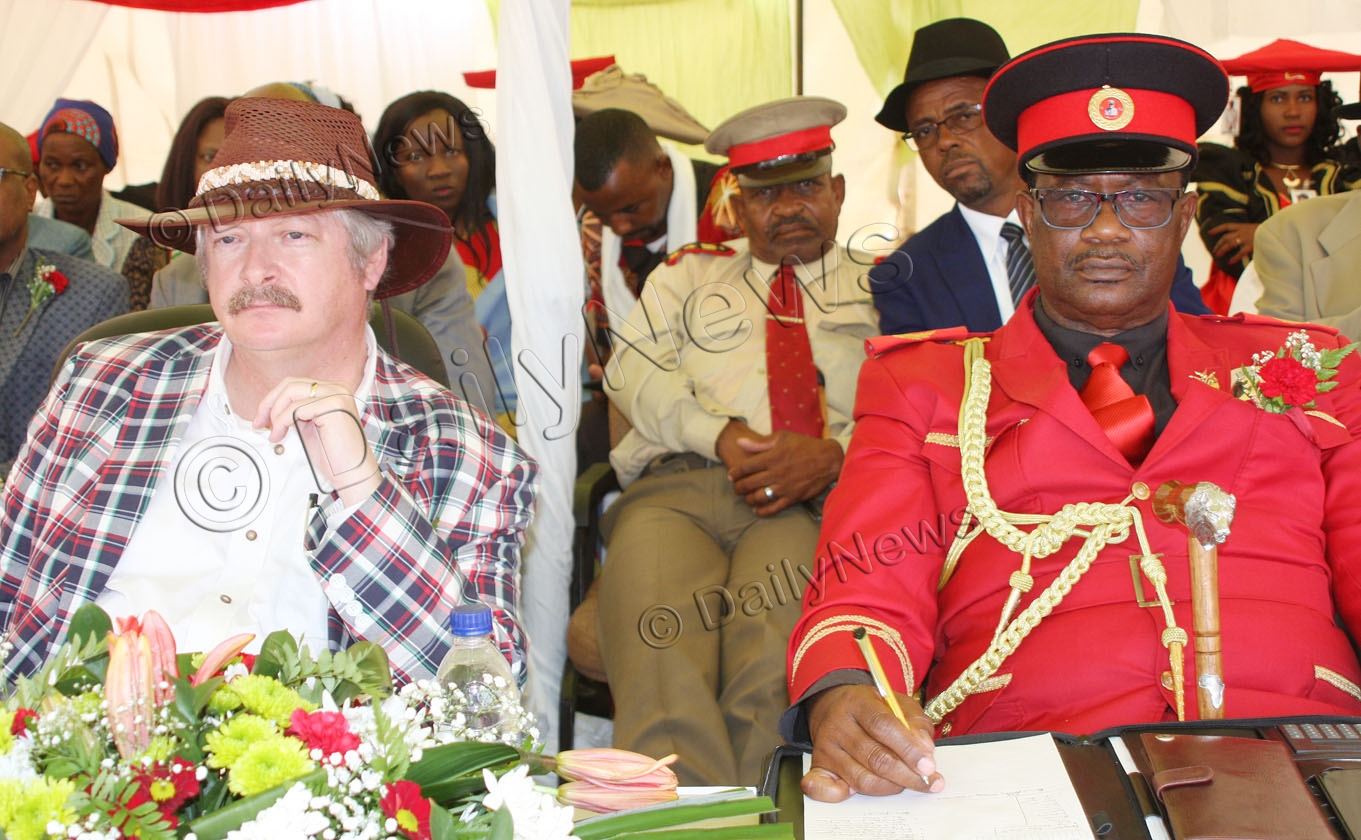Baherero converge on Takarive
20 Mar 2018
Baherero from different parts of Botswana descended on Takarive Heritage Site, about 20km from Mahalapye to celebrate their culture.
The Baherero or Ovaherero are a Bantu ethnic group found in different parts of Southern Africa notably Namibia, Botswana, Angola and South Africa.
There are many sub groups within the Herero ethnic group, which include the Mucuba, Kuvale, Zemba, Hakaona, Tjakiva and the Himba.
Sharing the history of the Baherero, historian and deputy permanent secretary in the Ministry of Presidential Affairs, Dr Jeff Ramsay said this was a day of remembrance, an opportunity to commemorate the resurrection of the Ovaherero in the aftermath of a terrible period of death and destruction.
The final 1904 to 1908 Ovaherero and Nama uprising against the Germans in Namibia, he said was the most horrific of Africa’s many anti-colonial struggles, claiming 70 per cent of all the Ovaherero at the time, along with not less than half of the nation.
This uprising, he said should not be forgotten by the descendants of the victims.
Between 1894 and 1896 the Germans began to rain destruction on the all communities of Ovaherero, Ovambanderu and Nama, who were suspected of supporting the resistance.
The Ovaherero, Nama and others repeatedly took up arms in resistance to the German policy of depopulating large areas for European settlements, in what was described as the Kalahari holocaust between 1893 and 1908.
The Kalahari holocaust began when the colonial regime in Windhoek set out to militarily subdue all local communities as part of a systematic campaign to rob them of their land for European settlement.
Many local communities together with Ovaherero leader, Samuel Maherero, escaped into Botswana where they were initially given sanctuary by the Batawana leader, Kgosi Sekgoma Letsholathebe.
Samuel Maharero arrived half starved at the then Batawana capital of Tsau in December 1904.
He relocated to Makalamabedi, before migrating in 1907 with some of his followers to Groenfontien in the Transvaal.
Unable to return to Namibia, even after the expulsion of the Germans as a result of the First World War, he finally settled in Mahalapye at the invitation of Kgosi Khama III.
Ramsay stated that the status of other Ovaherero and Ovambandero refugees in Ngamiland was also threatened as a result of the British decision in 1906 to detain Sekgoma Letsholathebe without trial while installing his nephew Mathiba as Batawana Kgosi.
In light of Ovaherero support for Sekgoma, the British pursued a policy of dispersing the refugees, some ended up in Mahalapye while smaller numbers found abode in places such as Lentsweletau and Morwa.
Many however managed to remain in Ngamiland blending in among those who had arrived earlier, while receiving mafisa cattle from Batawana.
Unlike most Bantu speaking groups who are primarily subsistence farmers, the Ovaherero are mainly pastoralists.
The Herero language, Otjiherero is the main unifying link between the Herero people.
Within the Otjiherero umbrella there are many dialects, including Oluthimba or Otjizemba which is a common dialect in Angola. ENDS
Source : BOPA
Author : Kgotsofalang Botsang
Location : TAKARIVE
Event : Cultural Day
Date : 20 Mar 2018









